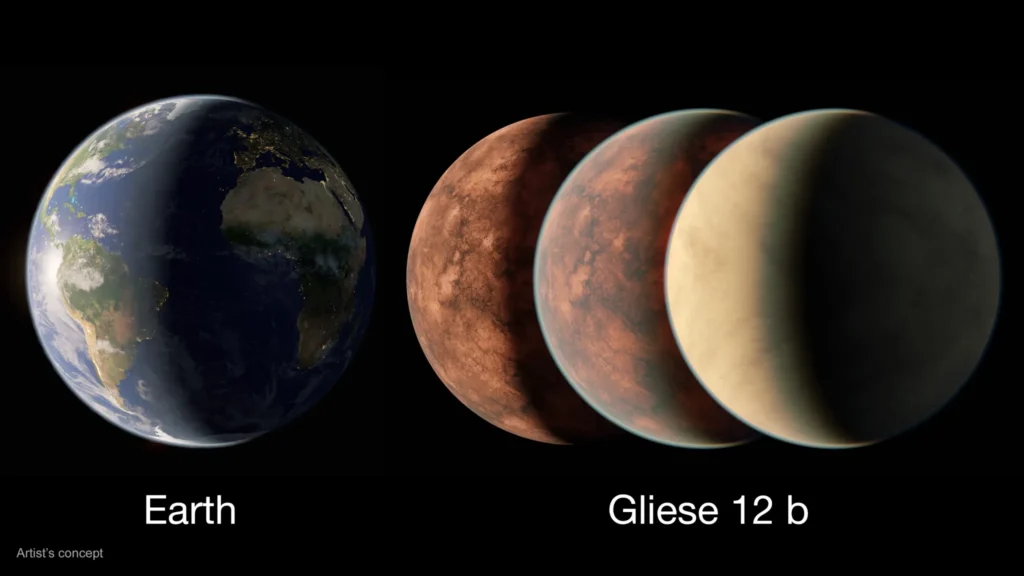An international team of researchers has announced the discovery of a new exoplanet. In its physical characteristics, it resembles Venus.

After analyzing the TESS data, astronomers turned their attention to the star Gliese 12. It is a cold red dwarf located almost 40 light-years away from us in the direction of the constellation Pisces. The size of the star is 27% of the size of the Sun, and the surface temperature is about 60% of the solar one. Every 12.8 days, its brightness decreases, which indicates that the luminary has a companion.
The newly discovered exoplanet was designated Gliese 12 b. Its orbit passes at a distance of 10.5 million km from the red dwarf. This is 7% of the distance between the Earth and the Sun. Gliese 12 b is smaller than Earth and is comparable in size to Venus. Another similarity lies in the amount of energy received. The exoplanet receives 1.6 times more energy from its star than the Earth receives from the Sun, and about 85% of what Venus gets. Assuming that Gliese 12 b has no atmosphere, the surface temperature is approximately 42 °C.
Of course, if Gliese 12 b has an atmosphere, its surface temperature will be higher, which is an unfavorable factor for the development of life (at least, resembling terrestrial). However, it should be borne in mind that, most likely, the exoplanet is in tidal capture. This means that one hemisphere is always illuminated, while the other is in shadow. They are separated by an intermediate “twilight zone”, the conditions in which are much more similar to those on Earth and may be more favorable for life.
Astronomers believe that studying Gliese 12 b can answer a number of important questions. They are especially interested in the presence of its atmosphere. Red dwarfs are usually very active stars that often produce powerful flares. Many researchers believe that over time they can completely blow away the atmosphere of nearby exoplanets.
However, the analyses conducted by scientists show that Gliese 12 does not show any signs of extreme behavior. Therefore, this system is an excellent target for advanced study using the James Webb Telescope. The data on whether Gliese 12 b has an atmosphere or not will be an important step towards deepening the understanding of how viable red dwarf systems are and will play an important role in the overall assessment of the habitability of our galaxy.
Earlier, we talked about how James Webb was able to study the internal structure of an exoplanet for the first time.
According to NASA


